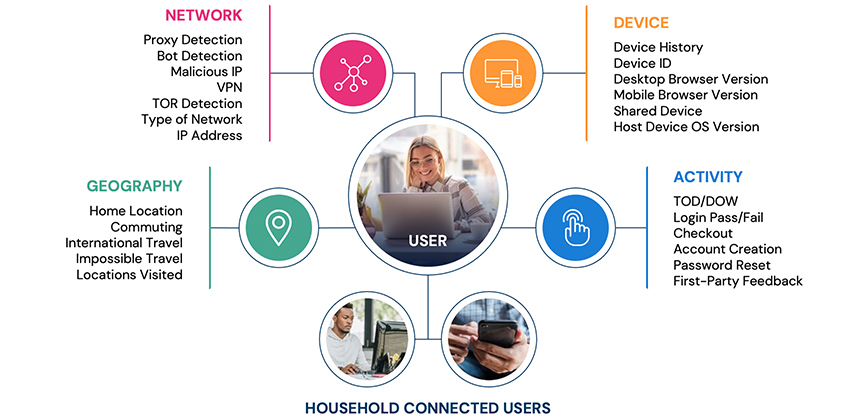Measuring Authentication Friction Early in the Customer Journey
Where should journey analytics begin? The beginning.

Where should journey analytics begin? The beginning.
Your first trip to Disneyland. Graduating high school. Crashing your dad’s red Ferrari. Good or bad, our early life experiences stay with us and shape who we are.
A similar logic applies to the online user experience (UX). Sure, logging in to an app doesn’t warrant a page in the family scrapbook, but, for B2C companies, the early stages of the user journey can go a long way in determining if someone leaves a negative review, abandons checkout, or bails for a competitor.
Despite the importance of delivering a positive user experience early on, journey analytics—how companies measure user interactions—are mostly observed later, or post-authentication. Many brands looking to personalize their in-app experiences neglect the beginning stages of the user journey (account creation and login) where churn and cart abandonment rear their ugly heads.
The impact of a negative authentication experience is startling. It’s imperative for brands to leverage journey analytics early on—from the point your customer hits your webpage, or opens your webOS or native mobile application—and prevent users from entering authentication purgatory.
Journey analytics is the key to customer centricity
For those who don’t read the CXO trades, journey analytics is the means by which companies observe and understand the business impact of users’ decisions. An ideal journey analytics platform enables CX teams to analyze user needs and sentiment at every step of the journey with help from surveys, Net Promoter Scores (Rotten Tomatoes for CX), and social listening (monitoring online discussions about a brand).
In today’s landscape, prioritizing journey analytics is central to building a customer-centric business. It’s the most efficient way to gather direct and indirect feedback and track UX issues in real time.
However, companies that solely track journey analytics post-authentication are missing the mark. A holistic approach to journey analytics—measuring user behavior from the time they visit an app to the time they transact—is far more effective and addresses authentication issues that otherwise get overlooked.
Authentication friction: a grisly sight
To further underscore the importance of tracking journey analytics at the authentication stage, let’s check out the quantified impact of login and signup friction for new and returning users.
We worked with Shawn Johnson, former GVP of Global Product and Design for Discovery+, DiscoveryGO, and NBCUniversal, to rank the negative CX impact of various authentication actions. (The higher the number, the more it detracts from CX.)
First up: new customer friction. In the table below, you’ll notice even seemingly minor actions, such as entering and re-entering an email address, or entering a phone number, hurt CX early in the customer journey. Verifying an email or phone number (-25) is a big no-no.
For returning customers, the authentication process lends itself to many possible CX detractors. The two whoppers—locked account following incorrect password, and false positive credit card decline (-50)—deal the biggest blow to users (and user retention).
The multiple actions related to an incorrect or forgotten password add up fast. So do other common snags like incorrect email and reCAPTCHA errors, unextended sessions, and the dreaded false positive MFA challenge, when a legitimate customer is subjected to a multi-factor authentication workflow.
At a recent CXO Exchange event, the CXO of a utility company described how 14 percent of inbound calls to the call center were related directly to signup or login problems. Further, 95 percent of customers requesting signup or login assistance from an agent never used the online, self-service features offered by the company again. At an average cost of $27 per call, this has a significant impact on the lifetime service cost of a customer who calls in for support with security-related issues.
One important callout is that new and returning users continue to favor mobile over desktop. Mobile user experiences are more susceptible to friction, namely at the authentication stage, which can exacerbate these friction scores by as much as 20 percent.
(Note: Feel free to download the tables above and keep track of your own CX detractors.)
The business impact of authentication friction
Companies that ignore journey analytics at the authentication stage fall victim to account creation friction (new users) and interrupted sessions (returning users). These issues result in churn, shopping cart abandonment, and other monetary impacts that deal a significant blow to bottom lines.
How significant? Try $1.2 trillion—that’s how much US businesses lost last year due to misidentifying legitimate customers, far more than identity fraud ($95 billion), a serious issue in its own right. (Use our calculator to see how much account creation churn and interrupted user sessions are costing your business.)
A convoluted signup process will always increase the likelihood of account creation abandonment. New users want to plug and play; asking them to verify by email or one-time passcode is an immediate step in the wrong direction. Returning customers, on the other hand, abhor re-authenticating during a browsing session. Per the FIDO Alliance, 60 percent of consumers have ditched an online cart because of password problems, and an accumulation of such friction could lead them to ditch a platform altogether.
Both of these issues begin at the point of entry. Deploying journey analytics early on is a necessity, but it isn’t the cure-all. The solution lies in identity.
Build a culture that reduces UX friction
Making a conscious decision to remove customer friction is part of a “customer first” cultural decision. As such, this can be measured by a corporate OKR (Objective and Key Result) that is owned by everyone in the organization. Importantly, as is common with OKRs, it requires cross-department collaboration where it may not exist today. Specifically, the Design/UX and security/fraud teams should establish KPIs for UX friction and meet regularly to review results and work on improvements.
Using a scoring system similar to the one discussed earlier, set milestones for both user journeys—new and returning users—and proactively reduce friction to as close to zero as possible. One KPI, for example, could be cutting false positive MFAs by 75 percent.
While monitoring user behaviors early in the customer journey is a necessity, it isn’t a deterrent for signup churn and login issues. The real solution lies in identity, specifically real-time identity intelligence.
Real-time identity intelligence (and a lot of it) is how Deduce neutralizes authentication friction so that customer journeys aren’t cut short before they even start. Our identity graph, the largest addressing risk, fraud, and trust in the US, enables us to know if users are legit prior to signup. Risk and trust signals analyze factors like geography and time of day against a user’s known tendencies, device, and network. If everything checks out, the user can zoom past annoying verification steps.

Real-time identity intelligence also enables returning users to continue their sessions unimpeded when they come back to a website or app. These extended sessions—known as continuous authentication—keeps users logged in so they aren’t booted prior to conversion.
If a new or returning user remembers their experience on an app or website, real-time identity intelligence ensures it’s a fond remembrance and not an angry snowball that builds into an avalanche of displeasure.
Journey analytics is a crucial tool for identifying CX issues at the earliest stages. It helps set goals and KPIs for eliminating these issues. But, when it comes time to smooth over verification speed bumps for new and returning users, ultimately real-time identity intelligence is the steamroller.
Want to treat your customers to The Trusted User Experience? Contact us today to get started.




